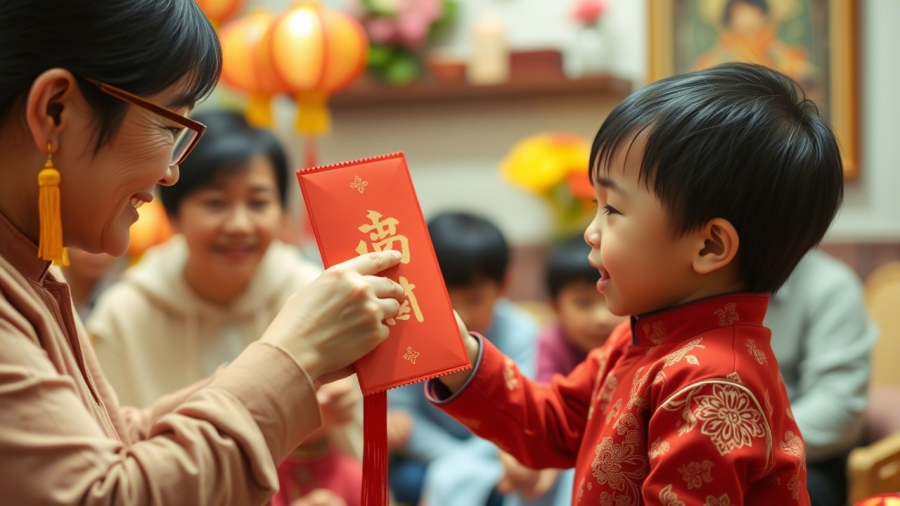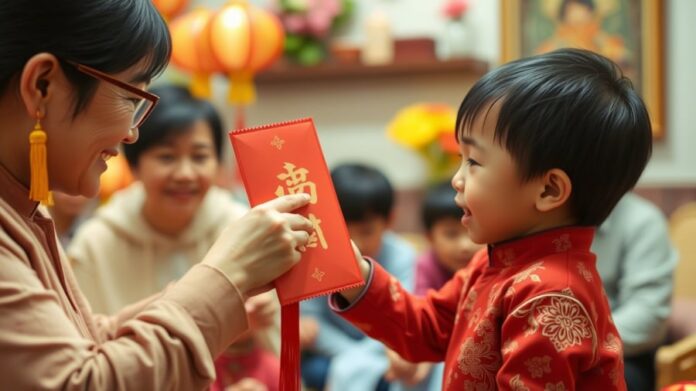The Lunar New Year holiday is one of the most anticipated times of the year for children, who eagerly look forward to receiving lucky money, a beloved tradition.
Managing this money can be a challenge for parents, as the amounts can range from hundreds to millions of VND.
For older children, money management can be based on trust and supervision from parents. For younger children, many families choose to save the money for them until they are older and can take control of their finances.
Online forums and social media platforms are abuzz with discussions on the topic of who should keep children’s lucky money, with many people offering their opinions and suggestions.
One expert suggests that parents can consider using a scientific allocation method to help children manage their lucky money effectively, which is worth considering.
Parents can allocate lucky money into five different portions to teach children about the value of money and financial management
50% deposited into a bank account
If a child receives a substantial amount of lucky money, parents can open a dedicated account for them and deposit 50% of the money into it. This will not only encourage a savings habit but also provide an opportunity for the child to accumulate a substantial sum over time.

Depositing 50% of the lucky money into a dedicated bank account for the child
10% allocated for education expenses
Children need a constant supply of books and stationery for their studies. Therefore, parents should set aside about 10% of the lucky money for these expenses. Let the child know that they can buy things for themselves, which will teach them to value and appreciate their possessions.
20% used to build a home mini-library
Using 20% of the lucky money to create a small library at home is a brilliant idea. Children can choose their favorite books, fostering a love of reading.
10% for a piggy bank
Life presents many opportunities for children to spend money, such as buying gifts for friends or parents. Allocating 10% of the lucky money for this purpose gives children the freedom to spend on small items and teaches them about sharing and compassion.
The remaining 10% for discretionary spending
Finally, the last 10% should be allowed for the child’s discretionary spending on personal interests. Whether it’s snacks or toys, having some freedom will motivate the child to spend wisely. Of course, this allocation should be discussed and agreed upon with the child.
Implementing this plan will help children develop good savings habits and a sense of responsibility and self-control.

Implementing a financial plan helps children develop good savings habits and a sense of responsibility.
The Lunar New Year holiday offers a great opportunity to educate children about financial intelligence
Managing lucky money during this festive season is an ideal time to teach children about financial awareness. As mentioned in the book “Rich Dad, Poor Dad,” when children start showing an interest in money, it’s a perfect time to educate them about financial management.
Many children do not yet understand the value of money, so lucky money from relatives is a precious opportunity to introduce them to financial concepts. Peter Lynch, a renowned investor, asserted that future wealth depends not just on IQ or EQ but also on financial intelligence.
Financial intelligence encompasses the ability to understand and manage money effectively. Parents can use lucky money as a teaching tool to help children grasp the origins of money and the hard work that goes into earning it. Emphasize that money is not easily earned and should be valued.
Additionally, parents should guide children in spending their money wisely, teaching them to choose only what they truly need and avoid wastefulness. Educational experts recommend that children start learning about financial matters as early as age three.
If parents are unsure where to start, here is a suggested timeline for developing financial awareness in children:
– 3 years old: Start recognizing paper money.
– 4 years old: Learn to use money to buy simple items like paintbrushes or candies.
– 5 years old: Understand that money is usually earned through work and begin to grasp the concept of exchanging money for goods.
– 6 years old: Able to count money, start developing savings habits, and understand the concept of “my money.”
– 7 years old: Learn to check product prices, compare them to their savings, and determine if they can afford to buy something.
– 8 years old: Can open a bank account, learn to save money, and explore ways to earn pocket money, such as selling used books or candies.
– 9 years old: Create a simple weekly budget and learn to compare prices when shopping.
– 10 years old: Learn to save a portion of their weekly allowance for larger purchases.
– 11 years old: Develop the ability to evaluate advertisements, analyze product quality, and understand the concepts of discounts and promotions.
– 12 years old: Value money, understand that earning it is not easy, and cultivate a savings mindset.
– Over 12 years old: Start learning about investment options like stocks and bonds.
Instilling financial intelligence in children from a young age helps them develop a calm and rational approach to money and effective financial management skills. A positive attitude towards money will lay a strong foundation for their future financial literacy, bringing long-term benefits.
A small amount of lucky money can teach valuable lessons. How lucky money is managed is a test of parents’ educational philosophy. Take advantage of this opportunity to teach children about financial principles and instill a healthy attitude towards money, making the tradition of lucky money even more meaningful.
Unveiling the 6 Ultimate Tips for a Healthy and Happy Toddler’s Appetite this Tet Holiday
The Lunar New Year is a time for family reunions, but it can also be a challenge for parents to ensure their children maintain a balanced and nutritious diet. With the festivities in full swing, how can parents ensure their little ones eat well, stay healthy, and avoid common illnesses during this busy time?







































